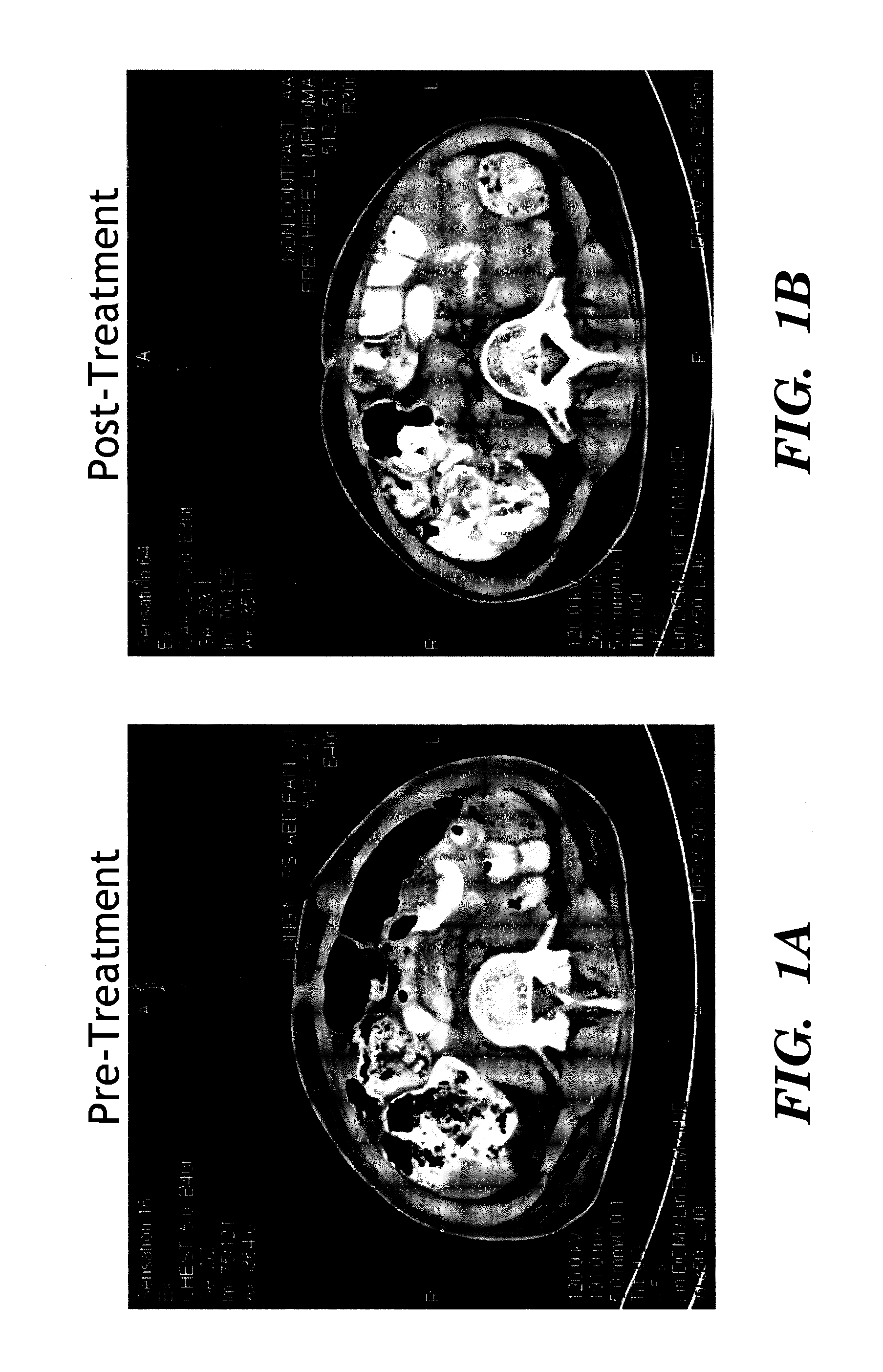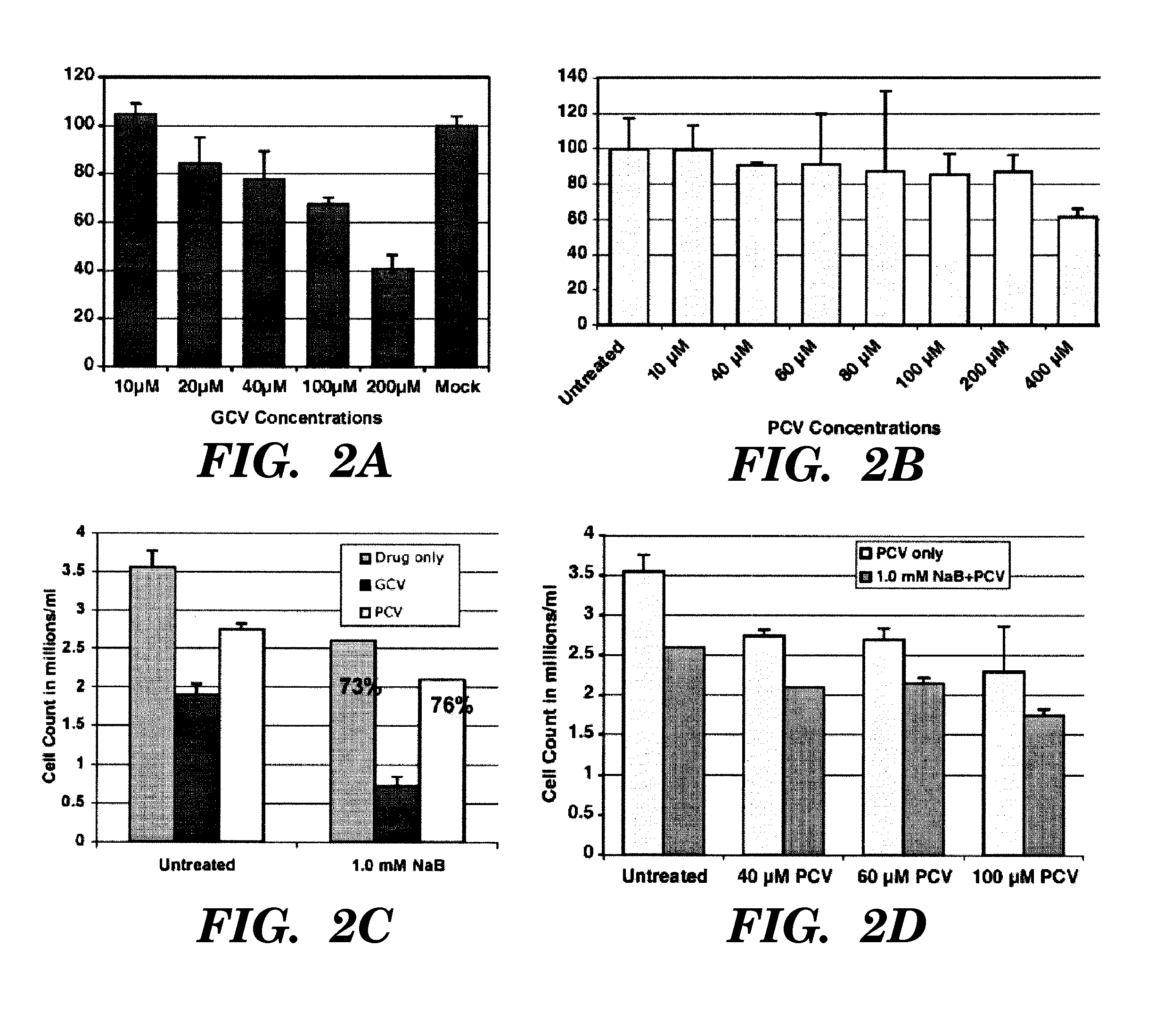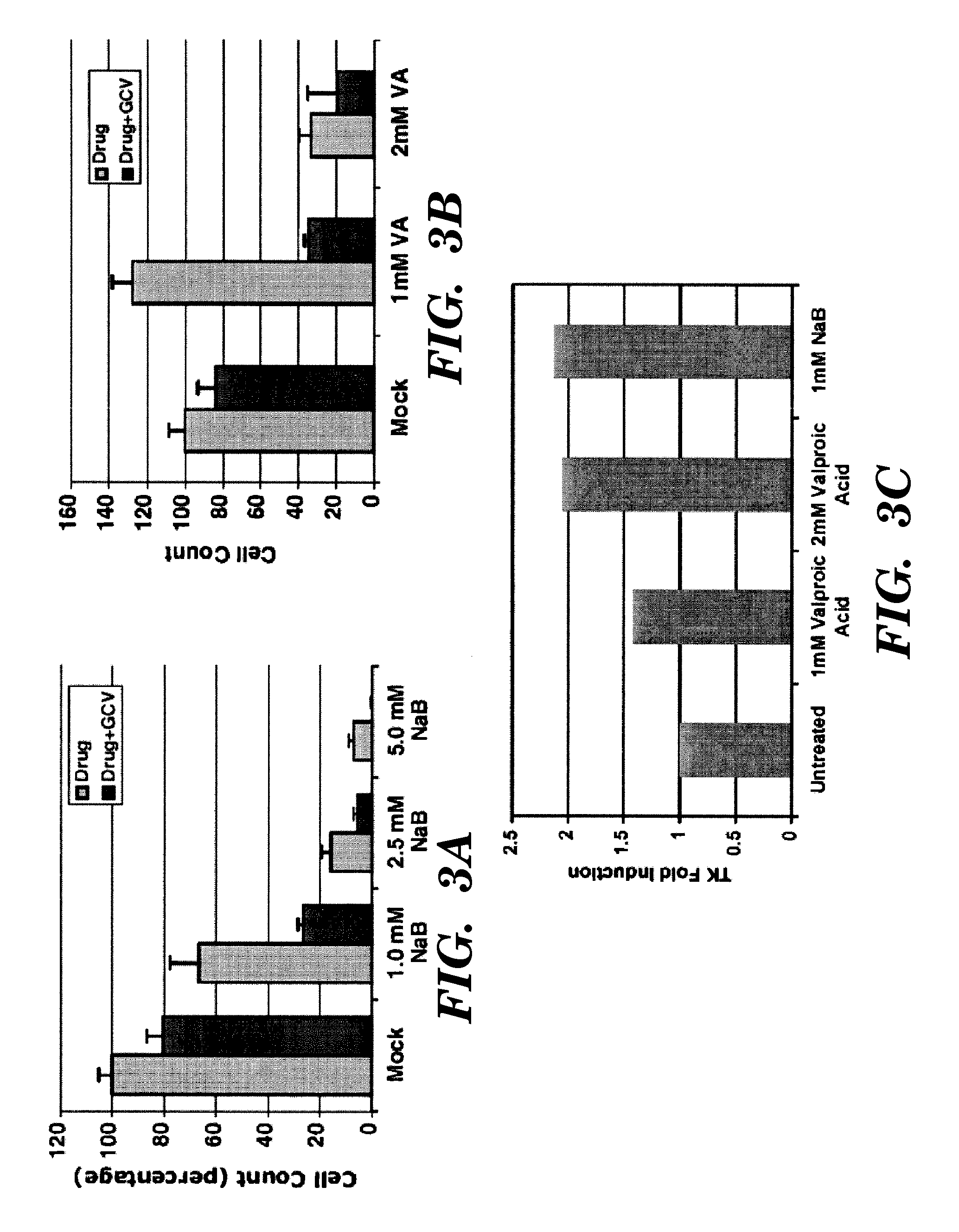Methods for treating viral disorders
a virus and disease technology, applied in the field of viral disorders, can solve the problems of premature termination of nascent dna, failure to govern the cytotoxic t cells and nk cells required to cope with ebv, and increased vulnerability of t cells in this region to ebv infection
- Summary
- Abstract
- Description
- Claims
- Application Information
AI Technical Summary
Benefits of technology
Problems solved by technology
Method used
Image
Examples
example 1
Phase 1 Study of AB Plus Ganciclovir in Patients with EBV Associated Lymphoid Malignancies
[0131]Fifteen patients with EBV-associated lymphoid malignancies, who had histologically confirmed lymphoid neoplasms that were EBV+, were treated with AB and GCV. Prior therapies (varying in different subjects) included rituximab, chemotherapy, chemoradiotherapy and bone marrow transplant. GCV was administered at a rate of 5 mg / kg intravenously (IV) over 1 hour twice per day, and continued throughout the cycle. AB was continuously infused at a starting dose of 500 mg / kg / day. Dose escalation was continued as follows until MTD was established:
[0132]Level 1: 500 mg / kg / day IV for 2 days
[0133]Level 2: 1000 mg / kg / day IV for 2 days
[0134]Level 3: 1500 mg / kg / day IV for 2 days
[0135]Level 4: 2000 mg / kg / day IV until day 21
[0136]A total of 15 patients were evaluated for anti-tumor response (Table 1). A complete response (CR) was defined as disappearance of detectable malignant disease on imaging or physica...
example 2
Phase II Trial of Low-Close Arginine Butyrate and Ganciclovir / Valganciclovir in EBV(+) Lymphoid Malignancies
[0141]It has previously been found that continuous infusion of inducing agent, for example, arginine butyrate, may not be necessary to maintain viral thymidine kinase expression and sensitization to anti-viral agents in EBV-associated tumors, but that, in fact, cells that survived initial exposure to the inducing agent plus the anti-viral agent remained susceptible to further cycles of combination treatment (Ghosh, S. K., et al. 2007 Blood Cells, Molecules, and Diseases 38:57-65, incorporated herein in its entirety). However, it was neither anticipated nor expected that after some first period of treatment with inducing agent and anti-viral agent, one could continue the anti-viral treatment effectively within a cycle of therapy without continued administration of the inducing agent (continued administration including continued periods of pulsing throughout).
[0142]A clinical tr...
example 3
Analysis of efficacy of the Herpes anti-virals
[0144]There are 12 mammalian HDACs, and any one of which might be required for repression of TK gene during latency in tumors. HDAC isozyme-specific siRNAs were used to to knockdown individual HDACs in tumor lines expressing latent EBV to determine which one of them induces reactivation of TK from latency, rendering it susceptible to anti-virals.
[0145]The EBV-positive B lymphoma cell line P3HR1 was used throughout these assays. The P3HR1 cell line was originally derived from Burkitt's lymphoma patient. EBV maintains a latent state of replication in this cell line. Cells were maintained in RPMI 1640 with 10% fetal bovine serum containing 100 U penicillin per ml and 100 μg streptomycin per ml. The HDAC inhibitors used were from five different classes: a) short chain fatty acids, b) hydroxamic acids, c) benzamides, d) cyclic tetrapeptides, and e) largazoles.
[0146]To measure the relative level of TK mRNA in various total RNA preparations, re...
PUM
| Property | Measurement | Unit |
|---|---|---|
| time | aaaaa | aaaaa |
| time | aaaaa | aaaaa |
| time | aaaaa | aaaaa |
Abstract
Description
Claims
Application Information
 Login to View More
Login to View More - Generate Ideas
- Intellectual Property
- Life Sciences
- Materials
- Tech Scout
- Unparalleled Data Quality
- Higher Quality Content
- 60% Fewer Hallucinations
Browse by: Latest US Patents, China's latest patents, Technical Efficacy Thesaurus, Application Domain, Technology Topic, Popular Technical Reports.
© 2025 PatSnap. All rights reserved.Legal|Privacy policy|Modern Slavery Act Transparency Statement|Sitemap|About US| Contact US: help@patsnap.com



